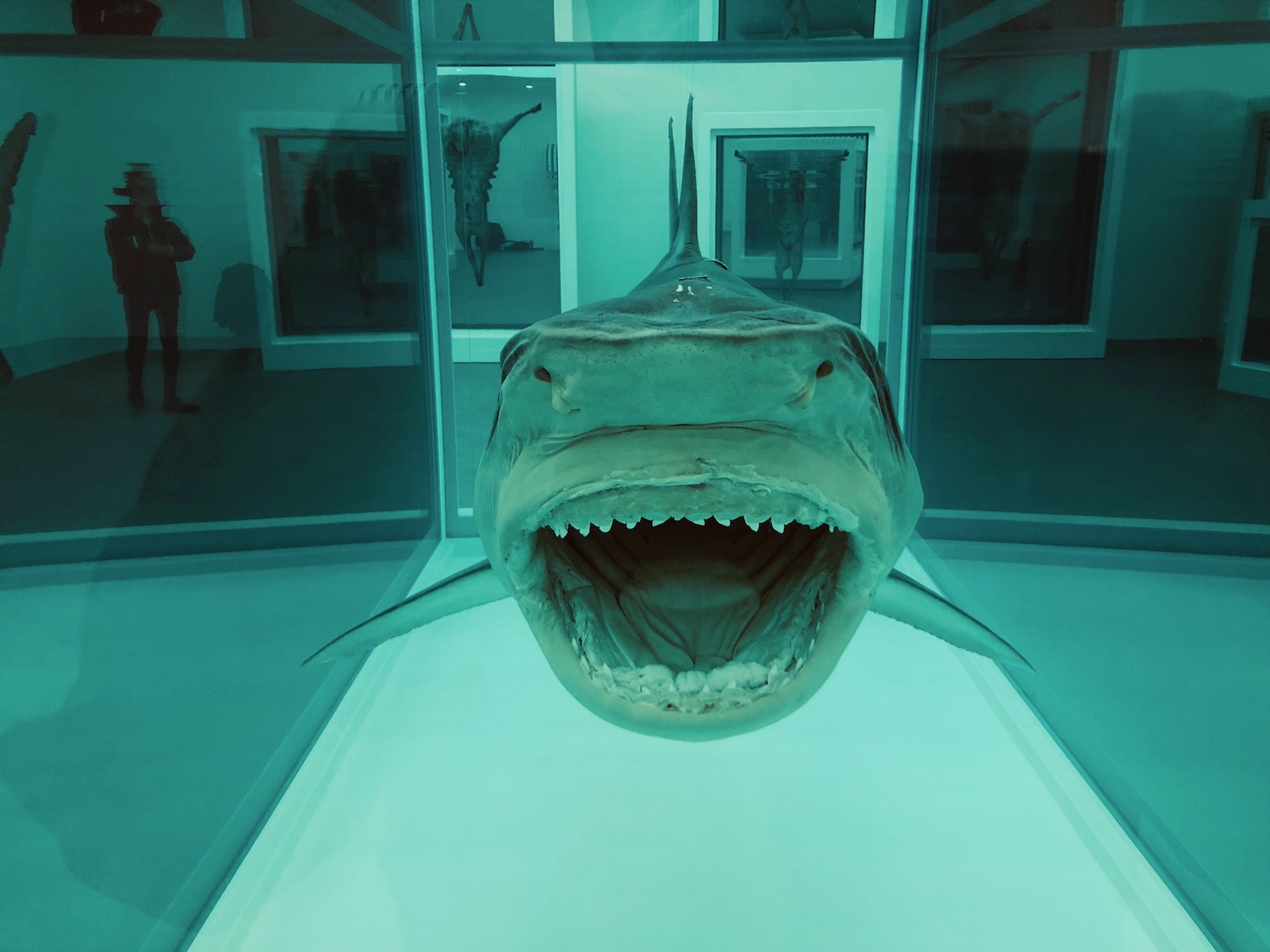An investigation has indicated that at least three sculptures by the Turner Prize-winning YBA (Young British Artist) Damien Hirst, labelled from the 1990s, were actually created in 2017. The sculptures, featuring preserved animals in formaldehyde, have been exhibited globally under the guise of being from Hirst’s early career, sparking questions about transparency in the art world.
The trio of works, including a dove, a dissected shark, and twin calves, debuted at a Hong Kong exhibition in 2017 hosted by the Gagosian Gallery. Marketed as pieces from the 1990s, they were displayed alongside Hirst’s other works, creating an impression of continuity within the artist’s oeuvre.
However, research by Maeve McClenaghan for The Guardian newspaper has revealed that these sculptures were fabricated decades later at a workshop in Dudbridge, Gloucestershire, contradicting the dates presented in their titles. For instance, the pieces “Dove, 1999” and “Cain and Abel, 1994” were exhibited despite having been newly created.
The discrepancy in dating raises significant questions about the presentation of contemporary art. While Hirst’s company, Science Ltd, asserts that the dates represent the conception rather than the creation of the artworks, industry norms typically associate dates with the year of physical completion.

The blurred lines between conception and creation have sparked debates within the art community about the integrity of an artist’s intent and the transparency of artistic production. Some argue that the use of misleading dates undermines the authenticity and historical context of the artworks, while others contend that the artist’s intention should take precedence over chronological accuracy.
Science Ltd Hirst’s official spokesperson stated, “Formaldehyde works are conceptual artworks, and the date Damien Hirst assigns to them is the date of the work’s conception. He has been clear over the years when asked what is important in conceptual art; it is not the physical making of the object or the renewal of its parts but rather the intention and idea behind the artwork.”
Moreover, allegations that Hirst’s company instructed employees to artificially age the sculptures to create the appearance of wear and tear have further clouded the ethical considerations surrounding the works. While Hirst’s lawyers deny any deliberate attempt to mislead the public, the controversy highlights broader concerns about authenticity and accountability in the art market.

The implications of this revelation extend beyond Damien Hirst’s work, raising questions about the practices of galleries, museums, and auction houses in presenting and selling contemporary art. With no standardised protocol for documenting and cataloguing artworks, institutions must rely on artists and their representatives for accurate information, leaving room for discrepancies and misinformation.
As the art world grapples with the fallout from this controversy, it underscores the importance of transparency, accountability, and ethical responsibility in presenting and promoting contemporary art. With public trust and credibility at stake, stakeholders must prioritise integrity and honesty to preserve the integrity of the art market.

Damien Hirst, born on June 7, 1965, in Bristol, England, is a British artist known for his controversial and provocative works that challenge conventional notions of art and its commercialisation. Hirst rose to prominence in the late 1980s as one of the leading figures of the Young British Artists (YBAs) movement, gaining international recognition for his innovative and often controversial art practices.
Hirst’s early life was marked by a fascination with the macabre and a rebellious spirit that would later manifest in his artistic endeavours. He attended the prestigious Goldsmiths College in London, where he studied Fine Art, graduating in 1989. During his time at Goldsmiths, Hirst began to gain attention for his unconventional approach to art, which often incorporated elements of shock, morbidity, and consumer culture.
In 1988, Hirst curated the groundbreaking exhibition “Freeze,” which showcased the work of his fellow Goldsmiths students in an abandoned warehouse in London’s Docklands. The exhibition caught the art world’s attention and marked the beginning of Hirst’s meteoric rise to fame.
Hirst’s breakthrough work came in 1991 with the creation of “The Physical Impossibility of Death in the Mind of Someone Living,” a tiger shark preserved in formaldehyde and displayed in a glass tank. The piece, one of the most iconic works of contemporary art, exemplified Hirst’s fascination with mortality and the fragility of life.
Throughout the 1990s, Hirst continued to push the boundaries of art with a series of controversial works that explored themes of life, death, and the human condition. His “Spot Paintings,” consisting of rows of coloured dots meticulously arranged on canvas, became emblematic of his fascination with repetition and seriality.
In 1995, Hirst was awarded the Turner Prize, one of the most prestigious awards in contemporary art, cementing his status as a leading figure in the art world. However, his win was not without controversy, with many critics questioning the artistic merit of his work and accusing him of sensationalism.
Despite his work’s controversy, Hirst’s influence on contemporary art cannot be overstated. His willingness to confront taboo subjects and challenge the conventions of the art world paved the way for a new generation of artists to explore similar themes in their work.
In addition to his work as an artist, Hirst has made a name for himself as a savvy businessman and entrepreneur. He founded the art production company Science Ltd, which oversees the creation and marketing of his artworks, and the Newport Street Gallery in London, where he showcases his extensive personal art collection.
In recent years, Hirst has continued producing new work and remains a prominent and influential figure in art. His legacy as an artist who dared to push the boundaries of art and provoke thought and controversy continues to resonate with audiences worldwide.
Photos: P C Robinson © Artlyst 2024

